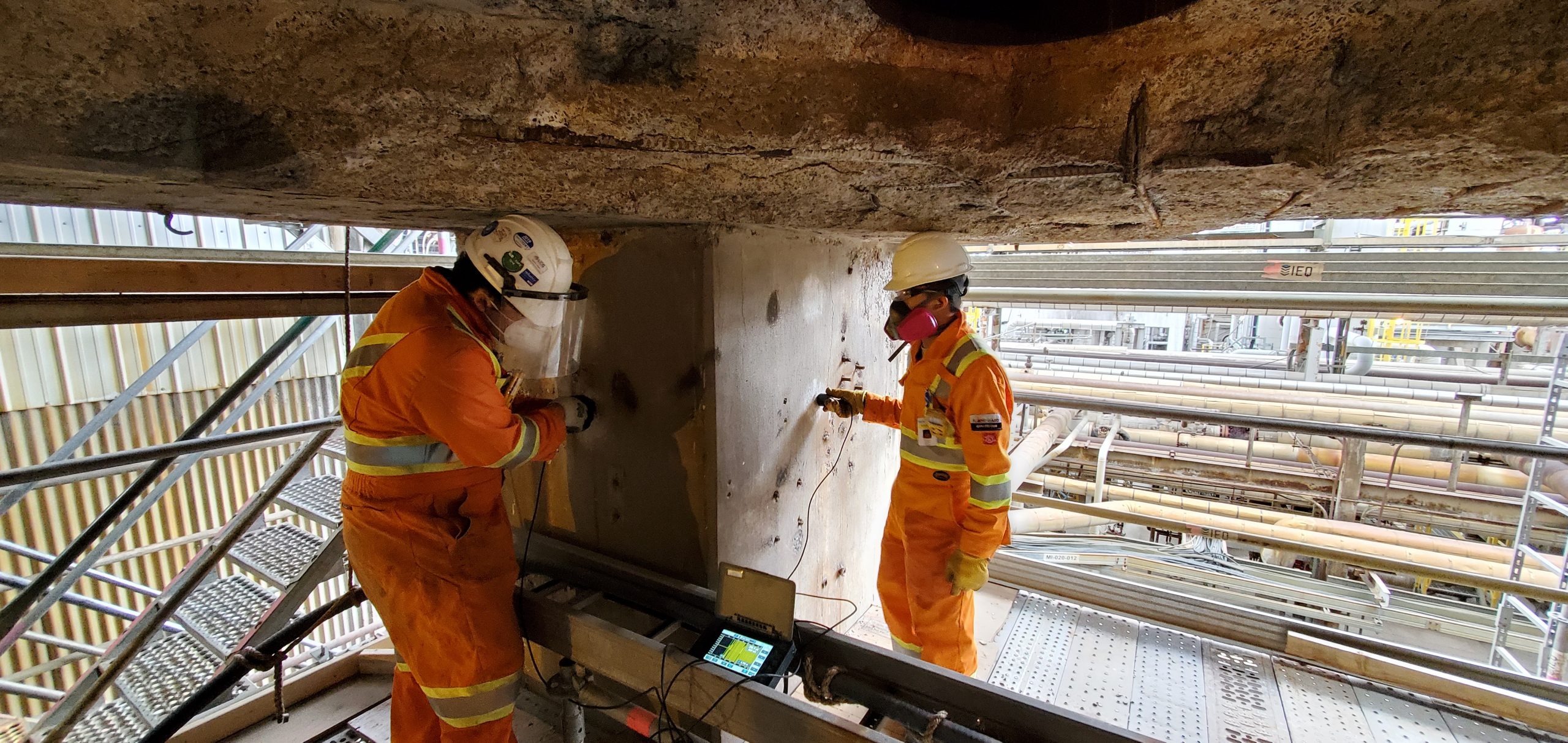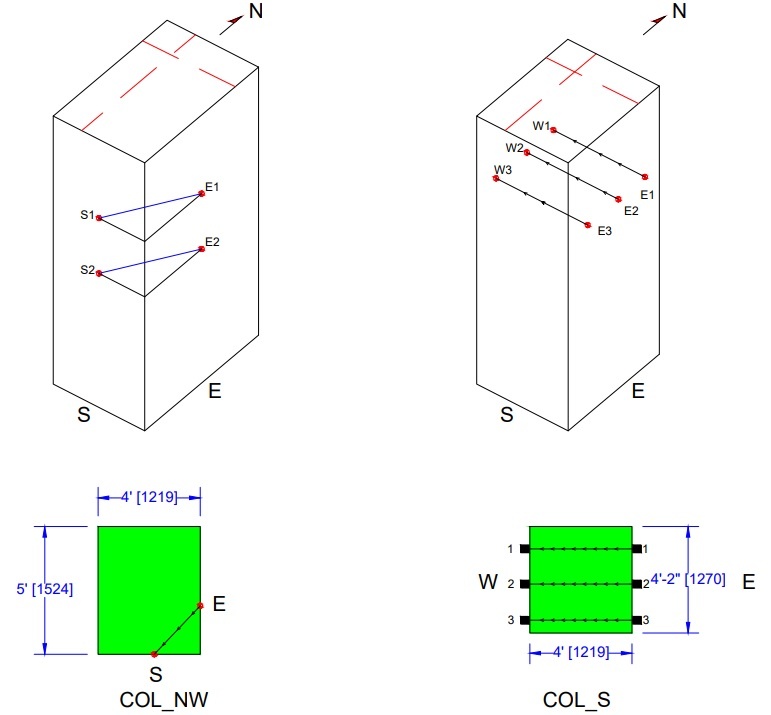The Problem
FPrimeC was engaged by GCM Consultants to perform concrete inspection and non-destructive evaluation on concrete structure at Suncor Montreal Refinery. The client was interested in evaluating the structural integrity of the concrete structure. The main objective of this project is to perform non-destructive testing on the concrete elements to evaluate the structural integrity of the concrete structure.

解决方案:非破坏性评估
Following communication with the client, a multi-technology approach involving different non-destructive testing methods was proposed for concrete inspection and evaluation. The proposed solution involved four major steps:
- Visual Inspection
- Ultrasonic Pulse Velocity (Learn more)
- 反弹锤试验(Learn more)
- 半细胞腐蚀电位映射(了解更多)
- 地面渗透雷达 - GPR(Learn more)
AVisual Inspection进行了。这是评估建筑信封的条件。它包括结构中混凝土元件的内部和外侧。锤戳was also conducted using a handheld hammer (metal) to test the concrete elements for potential sub-surface defects, such as delamination.
Ultrasonic Pulse Velocitywas used to verify the pulse velocity in concrete, and assess concrete quality at the test area. UPV tests were performed on the different elements of the concrete structure to assess the quality of concrete. Depending on the access, different test setups (i.e., direct, semi-direct and indirect UPV) were used for measuring ultrasonic pulse velocity in the concrete. The advanced form of UPV test which is called UPV Tomography was also used in this project.
反弹锤试验was used to assess uniformity and surface hardness of the concrete elements in the concrete structure. Rebound hammer test was performed in accordance with the specifications of ASTM C805.
Half-Cell corrosion mappingwas used to determine the probability (likelihood) of active corrosion in the concrete slabs. The Half-Cell test was conducted according to the recommendations of theASTM C876.在系统的测试网格上,测量用于创建选择测试区域的腐蚀活动的全面轮廓图。
GPR scanning用于检测使用电磁雷达脉冲的子表面靶,例如钢筋,预应力链(如果有的话)和主要空隙。GPR使用电磁波检测混凝土元件中的子表面目标。

NDE如何帮助评估?
The comprehensive test plan allowed the FPrimeC engineers to perform non-destructive testing on the different elements of the concrete structure in order evaluate the condition and integrity of concrete in this structure. The overall condition of the concrete structure was examined through visual inspection, and a series of non-destructive evaluation and testing. The visual inspection identified the locations of the visible defects such as the disintegration and decomposition of concrete while hammer sounding helped identify possible locations of subsurface defects such as voids and severe delamination. The rebound hammer test and ultrasonic pulse velocity helped evaluate the integrity and quality of concrete at various locations. Half-Cell Corrosion Potential mapping helped locate areas where the likelihood of active corrosion may occur. And GPR helped detect the possible locations of sub-surface defects. This multi-technology approach helped the FPrimeC engineers evaluate the condition and integrity of the concrete structure.
